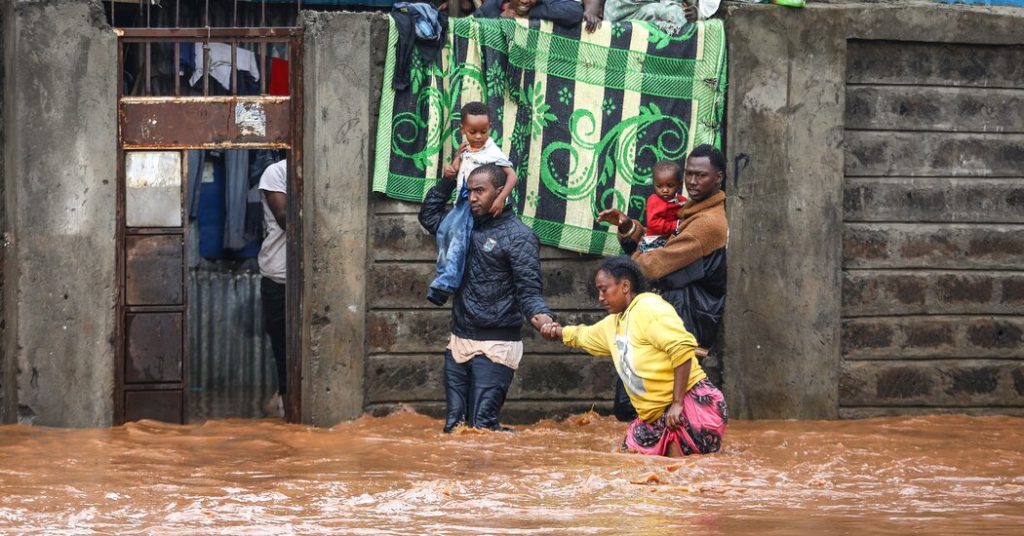Days of torrential rains have caused severe flooding in Kenya, leading to at least 32 deaths, 15 injuries, and displacement of more than 40,000 people. The heavy rains started in March during the “long rains” season, but intensified recently. The capital, Nairobi, has been particularly hard hit, with over 30,000 people displaced and some of the heaviest rainfall recorded in the city. The United Nations Office for the Coordination of Humanitarian Affairs reported that 18 people, including seven children, were rescued after being stranded by the floods.
The local government in Nairobi has been overwhelmed by the scale of the flooding, prompting calls for federal assistance. The Nairobi County senator, Edwin Sifuna, described the situation as “extreme” and shared a video showing people stranded on rooftops surrounded by floodwaters. The Interior Ministry’s cabinet secretary, Kithure Kindiki, announced that several government agencies were coordinating efforts to assist victims, conduct rescues, and evacuate those at risk. Transportation services, including commuter train services and major roads, have been disrupted due to the heavy rains.
The Kenya Meteorological Department has warned that the rains are expected to continue, with more rainfall forecasted for the coming days. This has raised concerns about the potential for outbreaks of diseases like malaria and diarrhea in affected areas. The agency also highlighted the destruction of crops and livestock caused by the floods, impacting the livelihoods of many communities. The recent flooding comes just months after similar torrential rains and floods killed dozens of people and displaced thousands more across the country.
The Kenya Railways has suspended commuter train services, and the Kenya Urban Roads Authority has closed several major roads in Nairobi due to flooding. The agency also issued warnings about heavy flooding along highways in Nairobi and Mombasa. The local government’s resources have been stretched thin by the disaster, underscoring the urgent need for additional support from the federal government and humanitarian organizations. Efforts are underway to provide relief, rescue those in danger, and address the immediate needs of the affected population.
With more rain in the forecast, the situation in Kenya remains precarious, with the risk of further flooding and associated challenges. The government, along with various agencies and organizations, is working to mitigate the impact of the disaster and ensure the safety and well-being of those affected. The resilience of communities will be tested as they rebuild their lives in the aftermath of the devastating floods. Photographs of the flooding paint a grim picture of the destruction caused by the heavy rains and the urgent need for assistance and support for those affected by the disaster.


